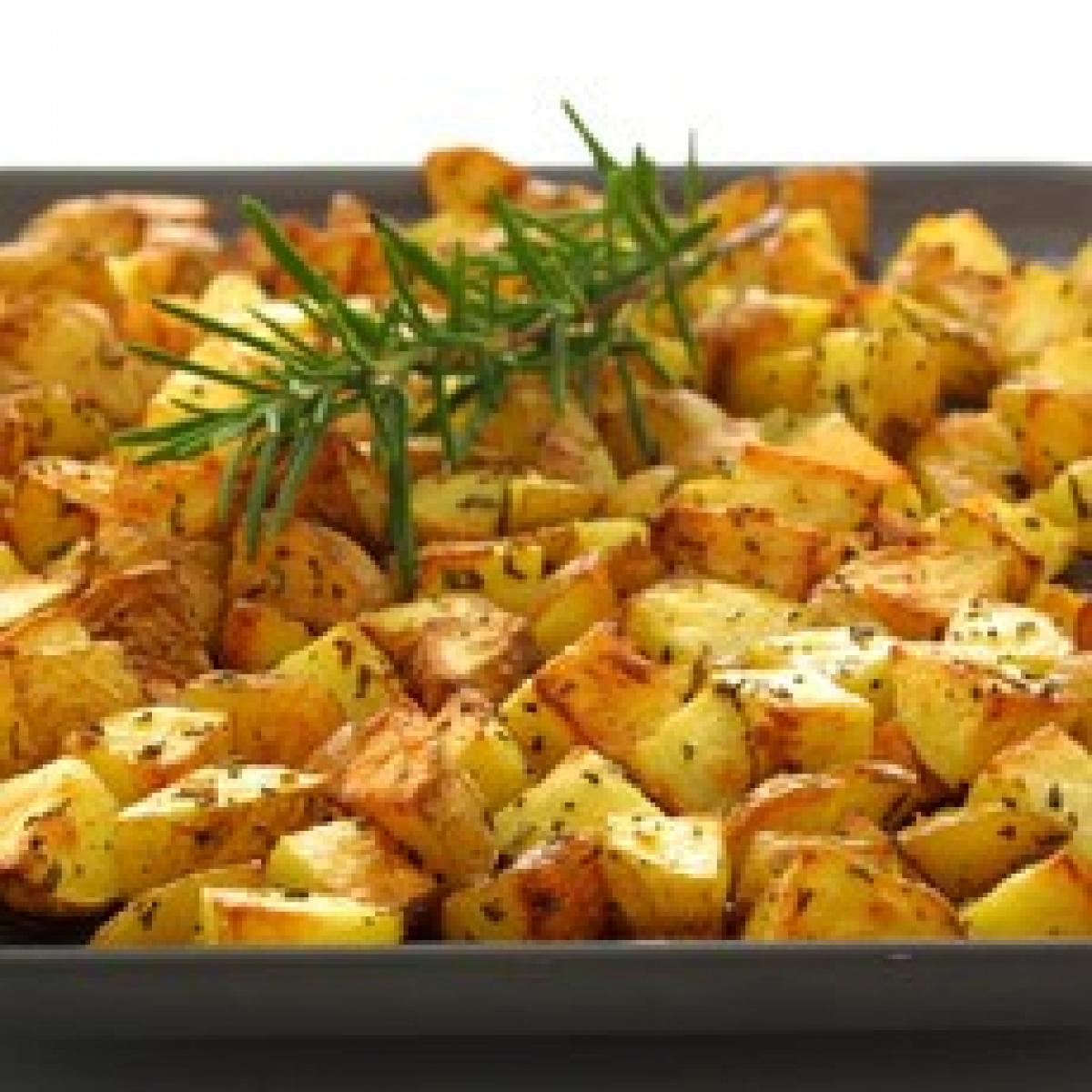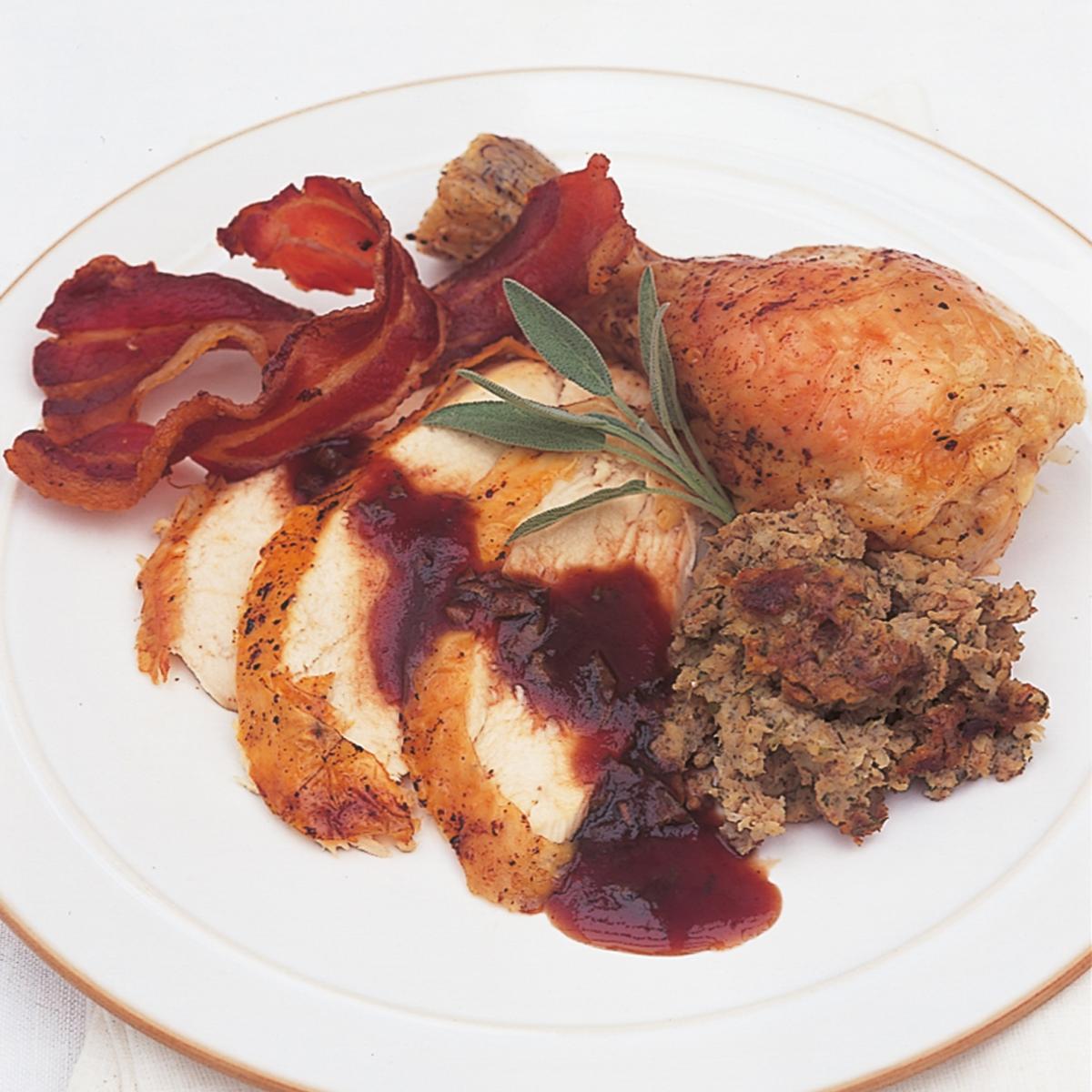The first thing you need to do when you get the turkey home is to remove the giblets, rinse them under a cold running tap, place them in a saucepan with 1½ pints (850 ml) water and the rest of the stock ingredients and bring them up to simmering point.
Remove the scum from the surface, then let the whole thing simmer gently, half covered, for 1½-2 hours. Then strain the stock and, when it's cool, store it in a refrigerator until needed. Before embarking on cooking a turkey, it's essential that you read my notes (see link at the end of the recipe). First of all, make the stuffing: to do this, you need to melt the butter in a large frying pan over a medium heat and lightly fry the onion, celery and chunks of sausagemeat until they are lightly browned and golden at the edges. This will take about 8-10 minutes.
After that, tip them into a large bowl and add all the other stuffing ingredients, mixing these together well and adding a good seasoning of salt and freshly milled black pepper.
To stuff the turkey, loosen the skin at the neck end, gently pushing it away from the breast using your fingers. Then pack the stuffing in, but not too tightly, as it will expand during cooking. Don't expect to get it all in as what's left over will go into the body cavity. Pat it to make a nice round shape and then secure the flap underneath with a small skewer or a couple of cocktail sticks.
Now add the rest of the stuffing to the body cavity, then place two large sheets of foil across the roasting tin, one widthways and one lengthways. Then lay the turkey on its back in the centre of the tin and spread it generously all over with the softened butter, making sure the thighs are particularly well covered (use your hands for this).
Next, season the bird all over with salt and pepper and finally lay the slices of pancetta all over the breast and legs, overlapping each other. Now wrap the turkey loosely in the foil: the parcel must be firmly sealed but roomy enough to provide an air space around most of the upper part of the bird. So bring one piece of foil up and fold both ends over to make a pleat along the length of the breastbone.
Then bring the other piece up at both ends, and crimp and fold to make a neat parcel. Now it's all ready for the oven. Pop it in and cook it at the initial high temperature for 40 minutes, then reduce the heat to gas mark 3, 325°F (170°C), and let the turkey cook slowly for a further 3½-4 hours. Finally, turn the oven up to gas mark 6, 400°F (200°C) and get someone to help you lift the turkey out of the oven – it's very heavy!
Then remove the foil from the top and sides of the bird, and place the pancetta slices on a small baking sheet. Now, using a long-handled spoon, baste the turkey thoroughly with all the buttery juices and then return it to the oven for a further 30-45 minutes to finish browning, giving it as much basting as possible during this time. Also, pop the pancetta into the oven to allow it to become really crisp and crunchy, as this is good to serve along with the turkey.
To tell whether the turkey is cooked, just pierce the thickest part of the leg with a skewer – if the juices run clear, it's cooked. Also, when you give the leg a little tug, you'll feel it give a little. After you remove it from the oven, give it at least 30 minutes, but up to 50 minutes, covered with foil in a warm place to relax. What happens during this time is that the juices which have all bubbled up to the surface will begin to seep back into the flesh, and this is what will make the turkey nice and juicy when you come to carve it.
Meanwhile, warm up 10 fl oz (275 ml) of the giblet stock and soak the apricots in it for 30 minutes. Then, to make the sauce, spoon off the excess fat from the roasting tin, leaving only the juices and about 2 tablespoons of the fat remaining.
Then place it over direct heat turned t






















































